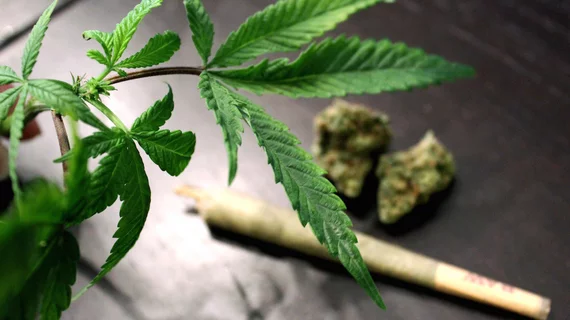Prior marijuana use may boost hospital survival of AMI—but it’s complicated
Marijuana use before an acute myocardial infarction (AMI) lowers the odds of in-hospital mortality by 21 percent, according to multicenter analysis of more than 1.2 million patients published in PLOS One.
But that’s not to say you should go stampeding toward your nearest dispensary based on the cardioprotective effects of the drug. A deeper dive into the study shows reported marijuana users were 10 years younger, on average, and were less likely to have coronary artery disease, heart failure and atrial fibrillation than non-users.
Lead author Cecelia P. Johnson-Sasso and colleagues from the University of Colorado Anschutz Medical Campus said perhaps marijuana use was associated with more minor AMIs in younger patients who otherwise wouldn’t have had cardiac events in the first place, partially explaining their better survival. That suggestion aside, there are previous reports supporting the heart-protecting qualities of marijuana.
“In a study by Montecucco, a single dose of CB2 agonist administered during ischemia reduced the infarct size following reperfusion,” Johnson-Sasso et al. wrote. “Decreased infiltration of inflammatory cells has been observed post-MI in mice that were pretreated with low dose THC, and other studies have the noted protective effects of CB2 receptor agonism against reperfusion injury and ischemia induced cardiac arrhythmias. … The observed outcomes of lower rates of mortality, shock, and IABP (intra-aortic balloon pump) placement in this analysis could be the result of cardioprotective effects of marijuana during AMI conferred by activation of CB2 receptors.”
The authors examined the primary composite outcome of death, mechanical ventilation, cardiac arrest, placement of an IABP or shock among 1.27 million AMI patients from eight states. Nearly 4,000 reported use of marijuana.
While there was no significant difference in the primary outcome, individual components of the endpoint were lower in the marijuana group, including mortality (21 percent drop), shock (26 percent) and IABP placement (20 percent). However, marijuana users were 19 percent more likely to be placed on mechanical ventilation—and 71 percent more likely to be ventilated if they also partook in tobacco products.
“Given the increasing prevalence and acceptance of marijuana use, these findings suggest that additional study is warranted to further investigate these discoveries and to identify potential mechanisms by which marijuana is associated with improved short-term outcomes following AMI and for mitigating the possible negative effects of concomitant substance use,” Johnson-Sasso et al. wrote.
The authors said it’s likely that marijuana use was underreported, leaving some users in the control group, which may have affected comparisons. Also, the drug amount, frequency and time since last marijuana use were not reported, so the researchers weren’t able to investigate a dose-response relationship.

